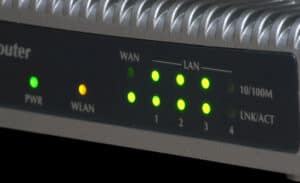
After seeing 120/140 Hz monitors, you will be curious about the Hz the human eyes can see and if this high Hz is not the reason behind your eyestrain and headaches.
The human eye can not see beyond 60Hz. After this information, you may be wondering why there are 120/140 Hz monitors and why these monitors are considered the best.
At the end of this article, you will know why monitors are made with higher Hz than what the human eyes can see.
Why Are 120Hz/144Hz Monitors Better for the Human Eye?
Even though the eyes can not see beyond 60Hz, you should know that the brain does more of the seeing than the eyes.
Some of the signals the eyes transmit to the brain are lost in the journey, making it necessary for the signal being transmitted to be higher than 60Hz. Also, the higher the monitor’s Hz, the smoother the transmission will be, and the images will look.
Is It Better To Have a 240Hz Monitor Over 144Hz?
Whether 144Hz or 240Hz, the average human eye will hardly notice the difference. But in rare cases, some human eyes see the difference. If a 240Hz monitor looks better to you, you should get it.
The Eyes and Gaming
Two factors determine your gaming experience; the refresh rate (Hz) and frame rate (FPS). These two factors do not depend on each other, but they work hand in hand to give you a good gaming experience.
Refresh Rate (Hz)
The refresh rate is how many times your monitor can refresh. The refresh rate is the signal sent to the eyes and transmitted to the brain before the image is formed in the brain.
Frame Rate (FPS)
Frame rate is the number of frames your computer can create per second; it is measured in FPS (FPS means frames per second). The FPS level will most times affect the quality of the video game.
If you have low FPS, let’s say, less than 30, your game might be slower, and images will look less realistic.
The human eye might not notice the difference between 120 Hz and 144 Hz, but it will easily see the difference between 30 FPS and 60 FPS.
Frame Rate and Refresh Rate
Even though the refresh rate and frame rate do not depend on each other, they complement each other. So, if you are to play a game with high FPS, you should have a high Hz monitor.
If you are gaming on a monitor with a high Hz rate and the game equally has high FPS, you will have an improved performance than lower FPS or Hz. And high FPS and Hz are best when dealing with games of realistic visuals.
Although it is recommended to have closer figures for the refresh and frame rate, the game will still work if you have lower FPS on high Hz. But you will see fewer frames, and the game will be slower.
How Much Framerate Can the Eyes See?
Framerate is the rate at which objects move; the higher the frame rate, the more realistic an image looks.
And as the frame rate gets higher, you will hardly notice the difference. Once it gets to 200 FPS and above, it becomes like real-life motion, which is the peak framerate the eyes will see.
Videos are usually filmed and played at 24 -30 frames per second, even though it can be done at higher FPS. And as contrasting as it might seem, slow-motion videos are usually recorded at very high FPS.
Effects of Refresh and Frame Rate on the Eyes
You should know that the eyes detect motion and light flash differently, and different eye parts are responsible for this. People usually notice flickering light at 50 – 60 Hz, so that fast-moving light can cause the black cloud for a second or two.
Motion at higher FPS reduces the black cloud effect because it changes the frames at a higher speed, producing less flicker. So when playing a video game or any activity involving lots of motion, higher refresh rates are advised.
But no matter how high the refresh rate is, the eye still has to adjust and refocus the frame refreshes anytime. If this repeatedly happens for a long while, it can cause eye damage.
So, if you are a gamer or someone who works on a computer for long periods of a day, you can do the following:
- Make provision for proper lightning – If your computer’s light is the only light source in the room, the reflection and glare will be directed into your eyes. The amount of light can affect the eyes.
- Adjust your computer’s brightness – Your computer’s brightness should be almost the same level as the surrounding. If your room’s lighting is dim, reduce your brightness to fit it, and if otherwise, your brightness should also be high.
- Blink more consciously – One of the reasons why we have eye strain is because we blink less while working with the computer. So, while using the computer, consciously try to blink more.
- Take a break – Take a break from looking at the computer so that your eyes can adjust and relax for a while.
- Position your computer well – Your computer should not be positioned at an angle where the light is directly reflected in your eyes. And it should be 20 – 24 inches away from you, not too far and not too near.
- Block out the blue light – Your computer and screen emit blue light which is the major source of eyestrain, fatigue and headaches. You can use anti-glare glasses to block out the blue light or turn on your display settings to Night mode(relative to your surrounding lightning)
Conclusion
Your eyes can not see beyond 60 Hz, but it is necessary to have your monitor display more than that so that after the signal is lost in between transmission, your brain will still be able to form the image.








